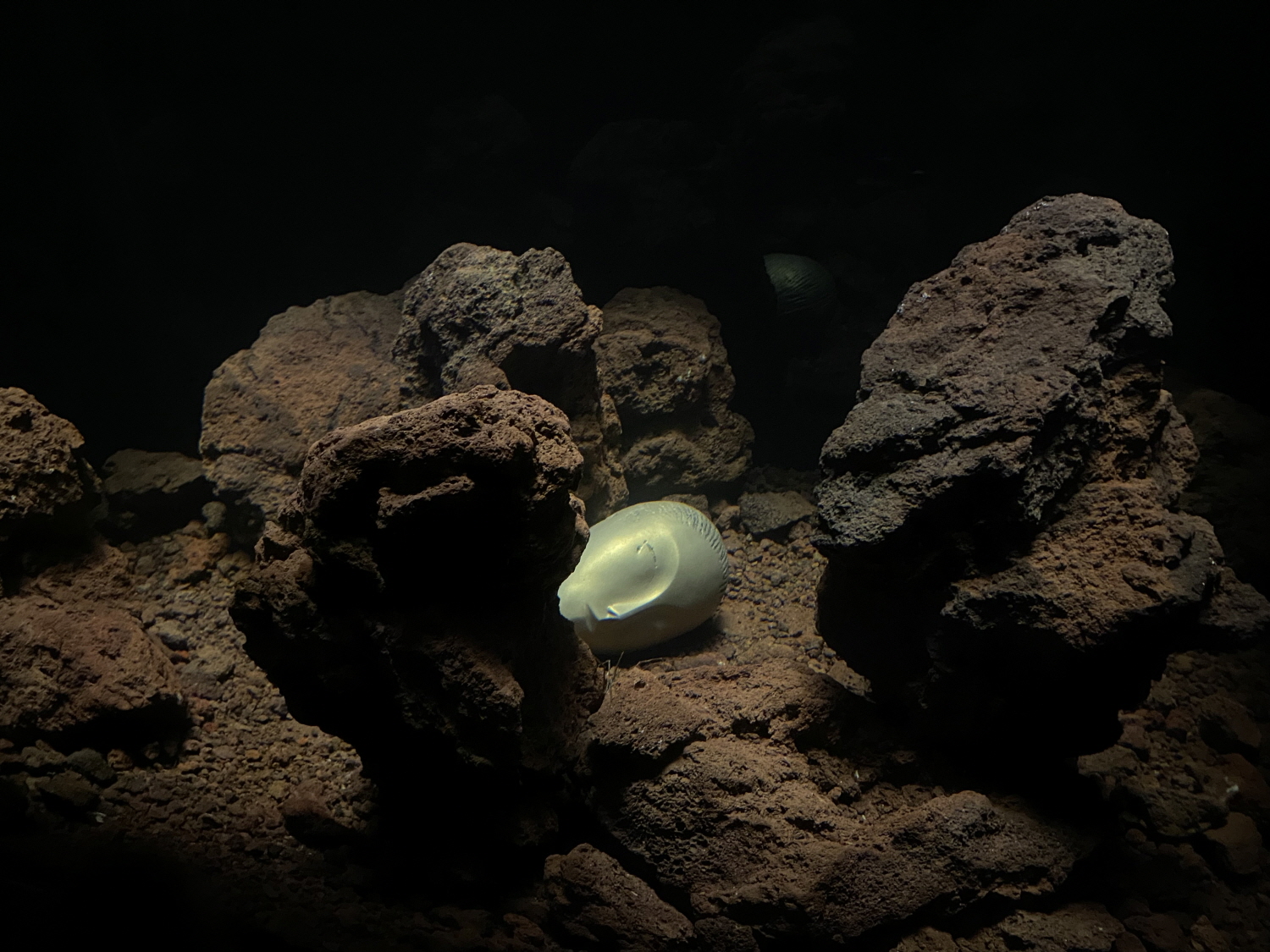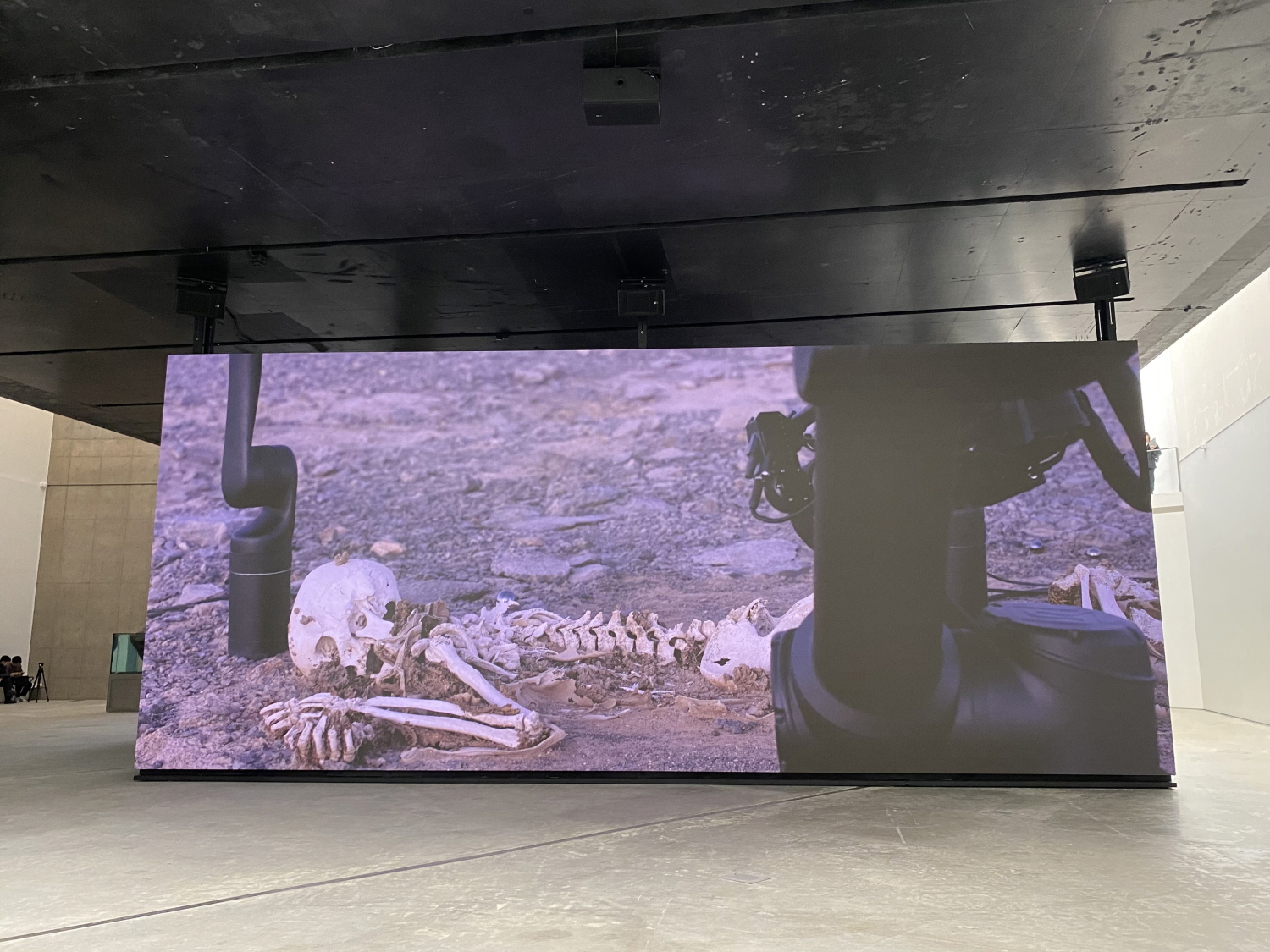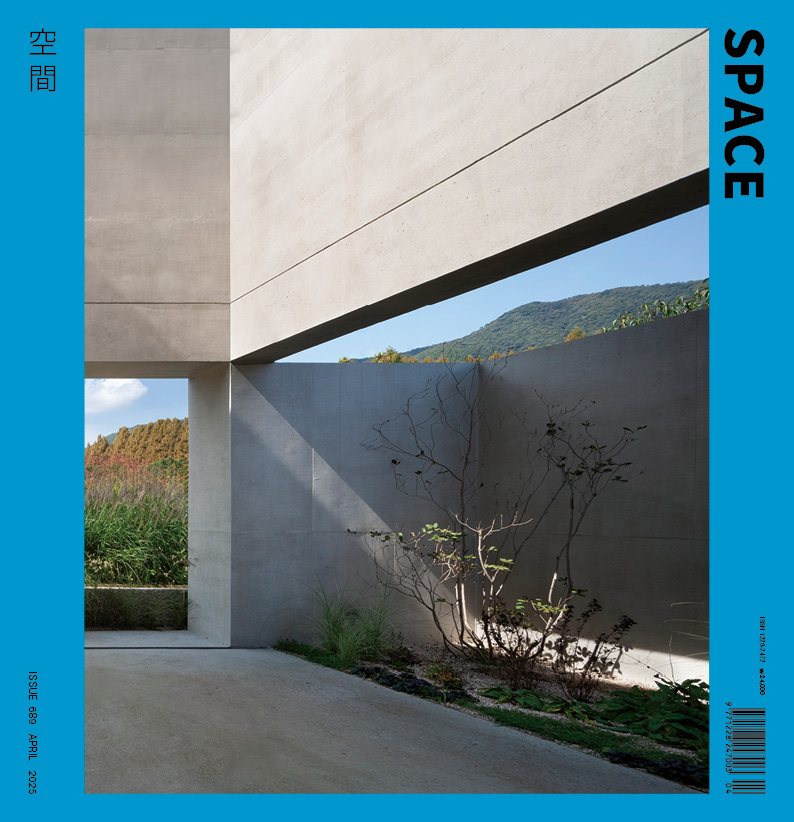SPACE April 2025 (No. 689)

Zoodram 4 (2011), An aquarium, arrow crabs, hermit crabs, and a resinmade conch inspired by Constantin Brancusi’s Sleeping Muse (1910) ©Kim Hyerin

Exhibition view of ‘Pierre Huyghe: Liminal’ ©Kim Hyerin
Globally renowned contemporary artist Pierre Huyghe will see his first solo exhibition in Asia open at Leeum Museum of Art from Feb. 27 to July 6. Pierre Huyghe is known for his continuous exploration of the relationship between the human and the nonhuman. For him, the non-human is not limited to flora and fauna but also includes everything that is not categorised as human. The artist indeed has dealt with diverse non-human matter, such as machines, animals, and natural elements. In this exhibition, he proudly presents nine recent works and three new pieces including Liminal (2024 – ongoing), Camata (2024 – ongoing), and Idiom (2024), which are sponsored by Leeum. In particular, ‘liminal’, which shares its title with the exhibition, can be interpreted as a transitory state, from which something unthought-of can emerge. Through this exhibition, he presents a third creature born on the boundary between humans and non-humans, and also materialises various forms of fictional worlds within the exhibition space.
The exhibition begins with a dark black box where a low monolith of basalt rock, Estelarium (2024) sits. This installation, cast with a pendulous abdomen, is intended to deliver the energy of birth. By slowly stepping into the dark space, visitors encounter an aquarium work, Zoodram 4 (2011) which combines non-humans and humans. In this tank, a hermit crab inhabits a resin mask of La Muse endormie (1910) by Constantin Brancusi. One of the three new works, Liminal is a real-time simulation-based media artwork. In this work, a hollow human form appears without a face, wandering across an infinite surface. This entity, reflecting the exhibition environment, immediately learns, grows, talks, and eventually transcends human-being to become a new being with its own identity. Meanwhile, the artist’s renowned works, Human Mask (2014), introduces a monkey who once carried out her duties in an abandoned restaurant in Fukushima, Japan. In this film, the monkey, adorned with a mask and the costume of a young girl, is trapped in her repetitive role, performing for herself alone in this dystopian setting, Fukushima. This work is a classic example of how the artist uses his work to articulate a fictional world and create a sense of spatiality.
The exhibition continues with the descending escalator. When visitors land in the ground gallery, they meet with both daylight and UUmwelt – Annlee (2018 – 2025). On the screen, a fictional figure, Annlee, is generated by human imagination in the form of vivid images. These mental images interact with and change in response to their surroundings through Cancer Variator (2016), which is composed of actual cancer cells. Alongside these works, it is easy to observe people wearing golden masks, Idiom. The sensor attached to the mask transmits unintelligible voices generated by AI technology. A streaming film work, Camata is an evolving piece that interacts with exhibition space and is continuously edited in real time. In this film, robotic arms positioned near a human skeleton perform a funeral gesture in the Atacama Desert.
Besides media works, Huyghe raises fundamental questions about the presence of humans. Being born, growing, reacting in real time, and interacting; evolving, thinking, and mourning. What exactly is humanity, which has existed for so long? What makes us human, and to what extent should we consider ourselves human? Through this exhibition, visitors can examine human existence from beyond the realm of humanity and imagine the future of Homo sapiens.





